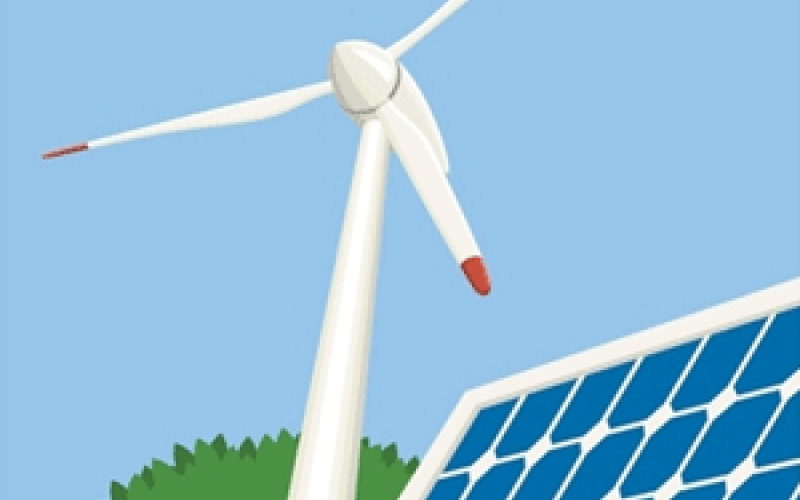Wind and solar energy can be a powerful combination in New York State

Wind and solar energy can be a powerful combination in New York State
Almost 30% of New York State's electricity demand can be met by wind and solar energy, and having both forms of renewable energy operating at the same time can significantly reduce the problem of intermittency.
Original Paper
Nikolakakis, T., and V. Fthenakis. "The Optimum Mix of Electricity from Wind-and Solar-sources in Conventional Power Systems: Evaluating the Case for New York State." Energy Policy (2011), 6972–6980.
Wind and solar resources are plentiful in New York State, but because they are intermittent – that is, because the wind isn't always blowing and the sun isn't always shining – integrating wind and solar energy into the electricity grid is a challenge. A pair of researchers at the Center for Life Cycle Analysis at Columbia University modeled the NYS electricity grid to estimate how much demand can be met by wind and solar resources while still maintaining the reliability of the system.
Their simulation was described in the November 2011 issue of the journal Energy Policy, and their results indicate that NYS can rely on renewables for 30% of electricity generation if both solar and wind are used concurrently.
The main job of the managers of the electricity grid – in this case, the NYS Independent System Operator – is to match energy supply and demand in real time. As energy demand rises and falls throughout the day, operators have to ramp electricity generators up and down. Because wind and solar photovoltaic (PV) energy production varies with weather conditions, the ability of an electric grid to absorb renewable energy depends on how readily it can ramp up and down conventional generation to make room for renewable generation. Assuming that the grid has no storage capacity, if wind and PV generation exceed the flexibility limit of the grid, then excess renewable energy would need to be dumped or curtailed by, for instance, turning turbine blades away from the wind. Curtailing reduces income at the wind farm or PV plant, and effectively increases costs.
In this paper, the authors model renewable energy production in NYS using actual wind, solar radiation, and electricity demand data from the year 2005. The model accepts constraints on flexibility and curtailment limits, and then determines the maximum production achievable for wind and PV for the year given those constraints.
Such modeling has been done before for wind or solar independently in other regions; what is new in this research is that the model solves for optimum renewables production by considering wind and solar together. Because they peak at different times of the day and year, wind and solar complement each other. The simulation model described in this paper considers this synergy and finds the levels of concurrent wind and solar production that yield optimum results.
The authors find that given a realistic 70% flexibility in the NYS energy system (meaning that 70% of capacity is rampable while 30% is always on), and given a 10% limit to curtailment, wind alone can achieve an 18% penetration. PV alone can achieve 12%. Both wind and PV together, however, can achieve a penetration of 27%.
One thing this model does not do is account for economic considerations, such as the relative costs of wind and PV installations, and the relative value of the electricity they produce (with solar tending to produce higher value megawatts during hot summer afternoons when electricity is most expensive). An economic model would need to be coupled with this technical model to paint a complete picture. However, this paper does demonstrate that wind and PV can go farther together than they can alone, and it offers a tool for maximizing the synergy between them.




